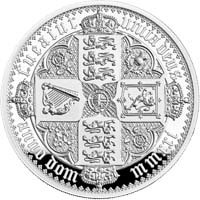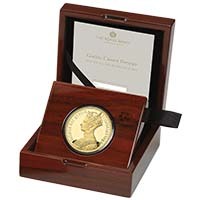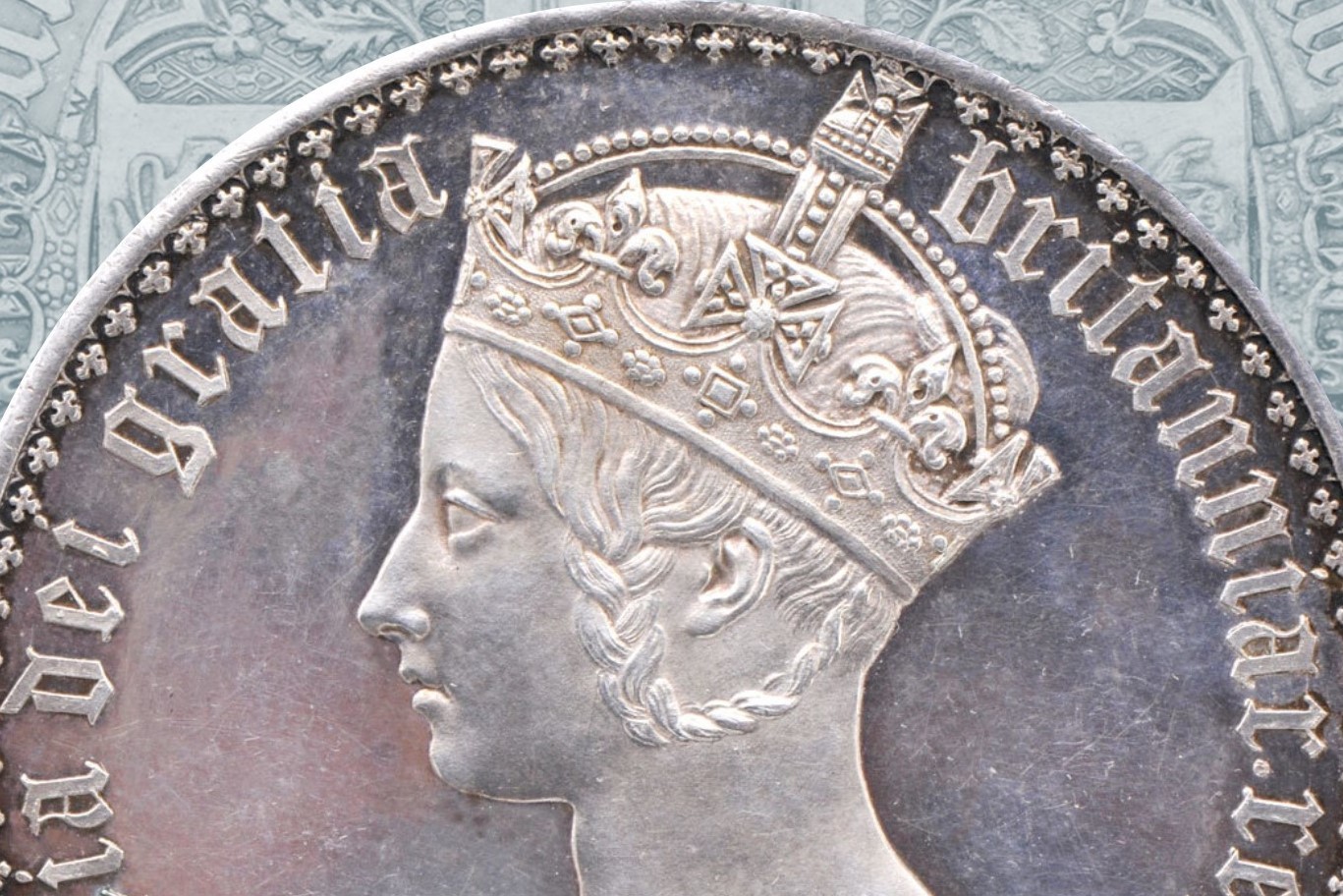
Updated on Dec 7 2021
We love a Gothic Crown here at The Britannia Coin Company. Among the most beautiful British coins ever minted, they’re scarce, ornate and stunning. That’s why we were so excited to hear that this remarkable 1847 design by William Wyon is going to be reissued on new coins from The Royal Mint.
The first part of that addition to the Great Engravers collection was released in Deceber 2021 on a range of silver and gold coins.Since only 8,000 original Gothic Crowns were ever struck, this news means that more collectors will have a chance to own Wyon’s masterpiece.
But why is it referred to as 'Gothic'? What does it have to do with the controversial Godless Florin? And what new Gothic coins are available? We’ve got all the details.
A New Effigy
The Gothic Crown was not the first of Victoria's coins to feature a portrait by William Wyon. She had first sat for him in 1834, before she became Queen in 1837. Her first issue of coins in 1838, the year of her coronation, featured an effigy by Wyon that would become known as the 'Young Head'. This was an elegant and flattering depiction. It pleased Victoria so much that it would remain in use on British and colonial coinage until she was well into her sixties, by which time the fresh-faced profile was rather inaccurate.

Wyon's Young Head portrait of Queen Victoria on the obverse of an 1872 Gold Sovereign.
Victoria's affection for Wyon's work and his position as Chief Engraver at the Royal Mint made him the obvious choice to craft new effigies when the need arose. He was called on to adapt his Young Head for the obverse of several military medals. Notably, Wyon had engraved a figurative representation of the Queen for his celebrated and innovative Una and the Lion Five Pound coin. However, when he was commissioned in 1846 for an updated profile, intended for a new British silver crown, he was once again able to elevate what could have become routine work.
The effigy he designed and engraved in 1846, graced what is known as the 'Gothic Crown', first issued in 1847. The limited initial mintage of around 8,000 pieces as well as a range of variations contributed to immediate interest from collectors. Extant examples appear in silver, sterling and gold, with and without inscribed edges. Silver specimens with an edge reading 'DECUS ET TUTAMEN ANNO REGNI SEPTIMO' ('An Ornament and a Safeguard, Regnal Year Seven') are among the rarest. Today, these sell for upwards of £20,000, their value stimulating a trade in forgeries.
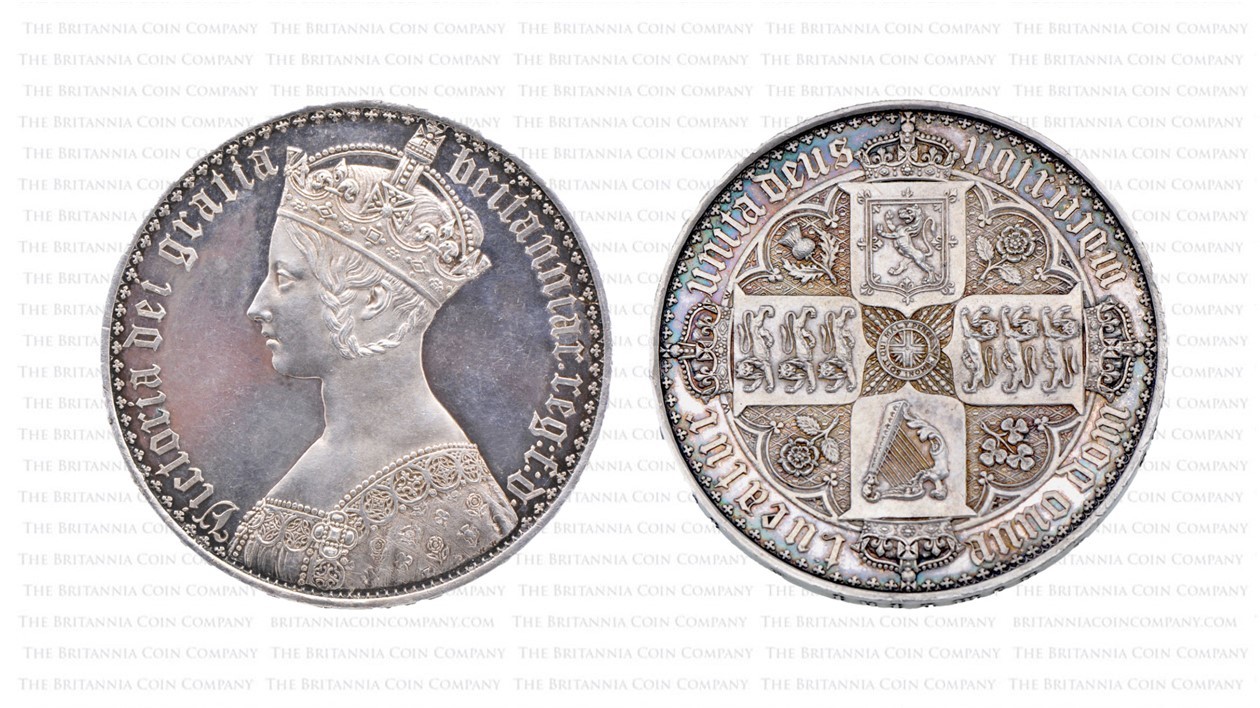
A stunning 1847 Gothic Crown, photographed before it was graded PR62 Deep Cameo by PCGS.
But it's not just the scarcity that appealed to numismatists. Then and now, the intriguing details of the Gothic Crown and the place it occupies in art history wins admiration. That and the portrait's reuse on a controversial coin that kick-started Britain's road to decimalisation.
Medieval Revival
The portrait Wyon's designed and engraved in 1846 is different in many ways from his previous images of Victoria. For starters, the effigy is hardly truncated and dominates the available space. Her shoulders, clothed in sumptuously detailed robes, extend nearly to the bottom edge while her crown brushes the top. The crown is a notable aspect of the design. It's St Edward's Crown, used since medieval times and restored for Victoria's ancestor, Charles II. Charles was the last monarch to have appeared crowned on his coinage. After his initial hammered issue, his coins and those of his successors bore bare headed portraits or featured stylised laurels. Wyon bucks the trend, crowning his Queen.

Edward the Confessor wears a golden crown in the opening scene of the Bayeux tapestry. St Edward's Crown, used in royal coronations is named after the Anglo-Saxon King and features on the Gothic Crown. CC0 1.0.
A stylised version of St Edward's Crown again appears on the reverse of the Gothic Crown. The reverse was engraved by Wyon but designed by William Dyce. Dyce was a Scottish artist, known for his role in British art education. He was painter, primarily, though his designs were sometime adapted for coins and medals. The product Wyon and Dyce collaborated on features four crowned shields, forming a cross around the arms of the Order of the Garter. Two of the shields feature the arms of England: three lions passant. The other two are emblazoned with the arms of Ireland and Scotland: a harp, and a lion rampant respectively. Between the shields are more national emblems: roses, a thistle and a shamrock. It's an elaborate, dense design that crowds the surface of the coin.
.jpg)
Achieving detail this fine on a surface of just 38mm diameter speaks to the skill of its engraver, William Wyon.
Around the central design on the reverse runs the legend, lowercase in ornate script: 'tueatur unita deus anno dom mdcccxlvii'. Translation: 'May God Guard these United Kingdoms, Year of Our Lord 1847'. Similar lettering is used on the obverse side. There, the text reads 'Victoria dei gratia britanniar.reg.f:d.'. Without abbreviations, the Latin inscription would read 'Victoria dei gratia Britanniarum Regina Fidei Defensatrix' or 'Victoria by the Grace of God, Queen of the British, Defender of the Faith'. This style of lettering is known as 'Blackletter' or 'Gothic'. It's the sort of writing you'll see in medieval chronicles and early printed books. As with the artists' choice to feature a crown, the blackletter type is designed to evoke a bygone era.
Victorian Gothic
In a previous blog we discussed the influence of the Neoclassical movement on William Wyon's 1817 Three Graces pattern crown. In his youth, Wyon was a pupil of John Flaxman, a leading advocate of that clean-lined, classically influenced style popular in Europe at the time. We also see Flaxman's influence in Wyon's sparse but idealised Young Head portrait. While the profile Wyon created for the Gothic Crown bears similarities in the fine featured face, the crown, lettering and rich detail of the design indicate that, by the 1840s, Wyon was experimenting with a different aesthetic. The new style that his 1847 Crown exhibits is known as 'Gothic Revival,' 'Victorian Gothic' or 'Neo-Gothic'.
Unlike Neoclassicism which looked back to ancient Greece and Rome, Gothic Revival, popular by the mid-nineteenth century, took inspiration from relics of the middle ages. Revivalists much admired the trappings of the first iteration of Gothic style, which developed in the 1100s and remained popular well into the sixteenth-century in some parts. Proponents studied the irregularity and ornamentation of surviving ecclesiastical buildings, illuminated manuscripts and tomb monuments. Their new designs evoked the aesthetic of the era they idealised. This passion for all things medieval showed itself in the fine and decorative arts as well as fashion. The long plait, looping underneath Victoria's ear on the Gothic Crown was a vogue that came in with the new art style.
Gothic Revival is best remembered today as an architectural movement. One of the most famous buildings in this style is the Houses of Parliament. Ravaged by fire in 1834, the original medieval palace was replaced with a faux-medieval edifice, work on which began in 1840. Hard at work down-river on Tower Hill, the then location of the Royal Mint, Wyon would have been well aware of the enormous construction project. Perhaps the arches and tracery being installed upstream influenced the trefoil border of the Gothic Crown? It's certain that both the coin and the palace were products of the same fashionable art movement.
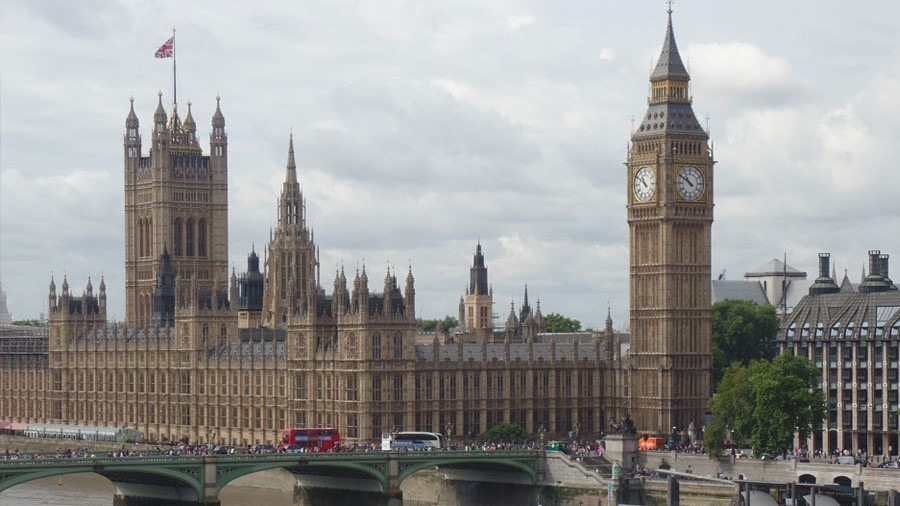
William Wyon would have watched the construction of the new, Gothic Revival style Palace of Westminster, designed by Charles Barry and Augustus Pugin. Photograph by Cody Logan, edited. CC BY-SA 4.0.
Romantic Nationalism
For its followers, though, Gothic Revival wasn't just a trend, it was an ideology. The movement's pioneer, Augustus Pugin, one of the architects behind the House of Parliament, understood his work as a political and religious force. He and his followers disdained the materialism they associated with the Industrial Revolution and found value in both the art and faith of the past. There was spiritual satisfaction, they thought, in the work of the medieval craftsman and Victorian Britain, in their opinion, could benefit from a bit of that.
Any serious student of design would know that the aesthetic that Pugin and William Wyon emulated in their work was a Western European phenomenon, apparent in buildings and artefacts from several countries. In some Victorian texts, however, 'Early English' is used interchangeably with the term Gothic, suggesting it to be an English innovation. This sounds cheeky but contemporary commentators from other nations claimed ownership too. In addition, situating Gothic style as distinctly English had some useful benefits.
If label stops, roses, finials and crowns were redolent of 'Merrie England' then anything that displayed them could claim a long and storied history. This intellectual move meant that Gothic Revival style came to be associated with a particularly British cultural hegemony that seemed to stretch long into the past. By attiring Victoria in in medieval symbols on his Gothic Crown, Wyon was making a connection between the Queen and a shared national history which could be understood as the basis of British pride and unity. If we understand the aim of currency design to be reassuring the bearer with recognisable symbols of power, guaranteeing a coins value, then Wyon's use of the Gothic in this context makes a great deal of sense.
The Godless Florin
In 1848, both the effigy and the reverse of the Gothic Crown were recycled for a new silver Florin, introduced first as a pattern coin and then put into circulation in 1849. A Florin or two-shilling coin was valued at one tenth of a pound sterling. The launch of this new coin represented an attempt a decimalising British currency: converting coinage into a system based on the power of 10. The Florin – named after the Dutch florin or gulden, not the old English coin – was a trial, designed to test public opinion before wholesale decimalisation.
For the Florin, the Gothic Crown's portrait of Queen Victoria was reduced in size to fit the 30mm coin. Still, the effigy takes up proportionally more space on the obverse surface of the Florin than on the Crown. The tip of the crown cuts into the edge detail which is beaded here, rather than the trefoil pattern of the earlier coin. Wyon's initials have moved too, appearing to the right of Victoria's shoulder. However, the most notable switch on the 1849 Florin is the legend. The lettering on both sides is Roman in style, rather than Blackletter. On the reverse the coin reads: 'ONE FLORIN ONE TENTH OF A POUND' in block capitals.
It's the obverse inscription that gives the 1849 coin its intriguing moniker: the Godless Florin. It reads, simply, 'VICTORIA REGINA 1849'. What was missing was 'DEI GRATIA' or 'By the Grace of God'. The Latin phrase or an abbreviation of it had been used on British coins for centuries, as well as the currency of other countries. It indicated that the monarch's power was not just temporal but spiritual, granted by God. The omission of this, as well as 'FIDEI DEFENSOR' ('Defender of the Faith'), prompted public outrage. Some conjectured that the Master of the Mint, Richard Lalor Sheil, an Irish Catholic, was responsible. Actually, it seems like Victoria's husband, Prince Albert, had suggested the legend. Nether-the-less, the Florin was redesigned for its next issue in 1851 and further moves towards decimalisation were stalled.
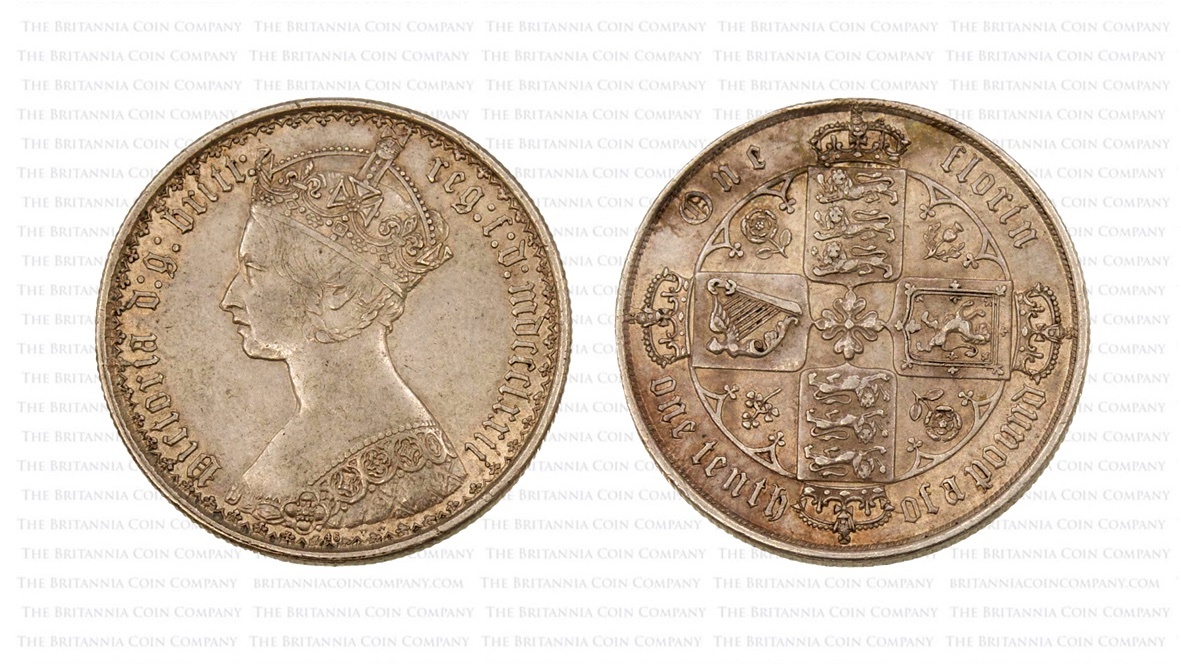
This 1872 silver Florin uses the same obverse and reverse as the Crown of 1847 with some modifications.
Lasting Legacy
The Gothic Crown and the Florin that arose from it were to be some of the last work William Wyon completed for British currency. However, the effigy seen on both coins was not Wyon's final engraving of Queen Victoria. He returned to his habitual, classically inspired style for a joint portrait of the Queen and her husband for medals awarded at the Great Exhibition of 1851. The Exhibition was an international cultural showcase, held to promote excellence in industrial design and elevate public taste. Although exhibitors came from across the globe, the organisers sought to demonstrate British ascendancy in all spheres.
This patriotic aim would not have been lost on Wyon. He had dedicated his own career to proving the superiority of British craftsmanship as well as working to legitimise coin engraving as an art form. His Great Exhibition medals neatly marry these two projects but it's the Gothic Crown that truly captures Wyon's mastery of his medium, his contemporary style and his understanding of the role of currency in setting the visual language of a nation.
Designs for the five prize medals were nearly complete on Wyon's death in late October 1851. Production was continued by his eldest son, Leonard Charles Wyon. The younger Wyon was a remarkable engraver in his own right. Like his father, he would produce several portraits of Queen Victoria including the 'Bun Head' effigy, in use from 1860 to 1894. In this way, the work of the Wyon family defined one of the most widely accessible symbols of Victoria's long reign: her currency.

Detail of a remarkable PR62DCAM 1847 Gothic Crown. A mark of authenticity is a small 'WW' - Wyon's initials - incuse to the lower edge of the obverse.
New Gothic Crowns?
Its easy to see why serious collectors seek Gothic Crowns but top-notch specimens are tough to get hold of and they don't come cheap. The design has become a little more accessible, however, with a new addition to The Royal Mint's Great Engravers series.
Billed as a celebration of classic British coinage, this series of reissues kicked off in 2019 with a remastered version of William Wyon's Una and the Lion, followed in 2020 with his Three Graces on a range of gold and silver coins.
Previous releases have paired historic reverse designs with Jody Clark's portrait of Her Majesty the Queen. The tricky thing about bringing the Gothic Crown to a new audience is the fact that both obverse and reverse are admired by numismatists. To get around this The Royal Mint has split this Great Engravers collection into two parts, releasing the reverse first in December 2021 with the portrait to follow in the new year.

The quartered arms reverse of the original Gothic Crown, as it appears on a 2021 Great Engravers two ounce gold proof coin.
We've got a range of Gothic Crown denominations available to order now, including:
- 2021 Great Engravers Gothic Crown Quartered Arms 2 Ounce Silver Proof
- 2021 Great Engravers Gothic Crown Quartered Arms 5 Ounce Silver Proof
- 2021 Great Engravers Gothic Crown Quartered Arms 10 Ounce Silver Proof
- 2021 Great Engravers Gothic Crown Quartered Arms 1 Kilo Silver Proof
- 2021 Great Engravers Gothic Crown Quartered Arms 2 Kilo Silver Proof
- 2021 Great Engravers Gothic Crown Quartered Arms 2 Ounce Gold Proof
- 2021 Great Engravers Gothic Crown Quartered Arms 5 Ounce Gold Proof
- 2021 Great Engravers Gothic Crown Quartered Arms 10 Ounce Gold Proof
- 2021 Great Engravers Gothic Crown Quartered Arms 5 Kilo Gold Proof
It's been particularly interesting to see the reverse design on very large coins, as well as in gold. It highlights the intricacy of a design that we have hitherto only been able to appreciate on a 38.00 millimeter surface.
It sounds like Gordon Summers, current Chief Engraver to the Royal Mint, has had a similar experience when remastering the 1847 design for the new series. He said:
'In working on this coin, I’ve become aware of the staggering level of thought that has gone into its tiniest details. In a time when we equate perfection with mechanical precision, it is amazing to witness the results of the thousands of micro-decisions made by Wyon when engraving ...'
We can't wait to see the Gothic portrait, due out in the new year and we'll update this article when its released.
Share Your Thoughts
What do you think of The Royal Mint's new Gothic series? Let us know on Facebook, Twitter or Instagram.
Frequently Asked Questions
The Gothic Crown is the common name given to a Victorian British silver crown first issued in 1847. It was crafted by two great artists: William Wyon and William Dyce. The elaborate design was inspired by a fashionable art movement known as Gothic Revival which gives the coin its name. Proponents of Gothic Revival took inspiration from the medieval world. Several details of the Gothic Crown harken back to the distant past, such as the Blackletter legend, decorative detail and the ancient crown worn by Queen Victoria on the obverse.
The obverse of the Gothic Crown was devised and engraved by Royal Mint Chief Engraver, William Wyon. The coin's reverse was also engraved by Wyon, after a design by William Dyce. Wyon's earlier creations, like the Three Graces pattern crown and his Una and the Lion five pound piece reflected the Neoclassical style popular in his youth. The Gothic Crown is the work of an artist at the height of his powers, exploring a new style: Gothic Revival.
The Gothic Crown got its name from the art style that influenced its design: Gothic Revival. Gothic Revival, also known as Victoria Gothic, was very popular in the nineteenth century. Proponents of this movement looked back to the middle ages for inspiration, particularly a style known as Gothic. Several medieval-inspired details can be seen on the Gothic Crown including the trefoil border, the Blackletter legends and the ancient crown that features on both sides of the coin.
Collectors admire the unusual, ornate style of the Gothic Crown, the work of renowned engraver, William Wyon. They are also intrigued by the limited initial minting of only 8,000 pieces and the numerous variations that can be found, including different edges and metals. While proof examples can sell for upwards of £20,000, less scarce examples can be acquired for hundreds. This means the Gothic Crown represents a realistic but significant acquisition for collectors with a range of budgets.
William Wyon was a prolific nineteenth-century British engraver, well known for his beautifully designed and finely crafted coinage. He was employed by the Royal Mint from 1816 as Second Engraver before becoming Chief Engraver in 1828. During his long career he executed dies for many notable coins, including the Una and the Lion five pound piece, the stunning but ultimately unused Three Graces pattern crown and his attractive and symbolic 1847 Gothic Crown.
The Godless Florin was the first British Florin or two-shilling coin, introduced in 1849. Valued at one tenth of a pound the new Florin was an attempt at decimalisation. It reused the effigy and reverse from the 1847 Gothic Crown with some modifications. Notably, the obverse legend was changed to read 'VICTORIA REGINA 1849'. The omission of the traditional 'DEI GRATIA' or 'FIDEI DEFENSOR' caused uproar. The design was revised when the Florin was reissued in 1851.
The Godless Florin earned its moniker from controversy surrounding its inscription. Instead of the usual 'DEI GRATIA' or 'FIDEI DEFENSOR' the legend on the coin simple read 'VICTORIA REGINA 1849'. It was customary for British coinage to nod to the monarch's role as head of the Church of England. The omission prompted outrage from some who blamed the Master of the Mint. In reality, it seem the idea was Queen Victoria's husband, Prince Albert's. It was changed for the next issue in 1851.

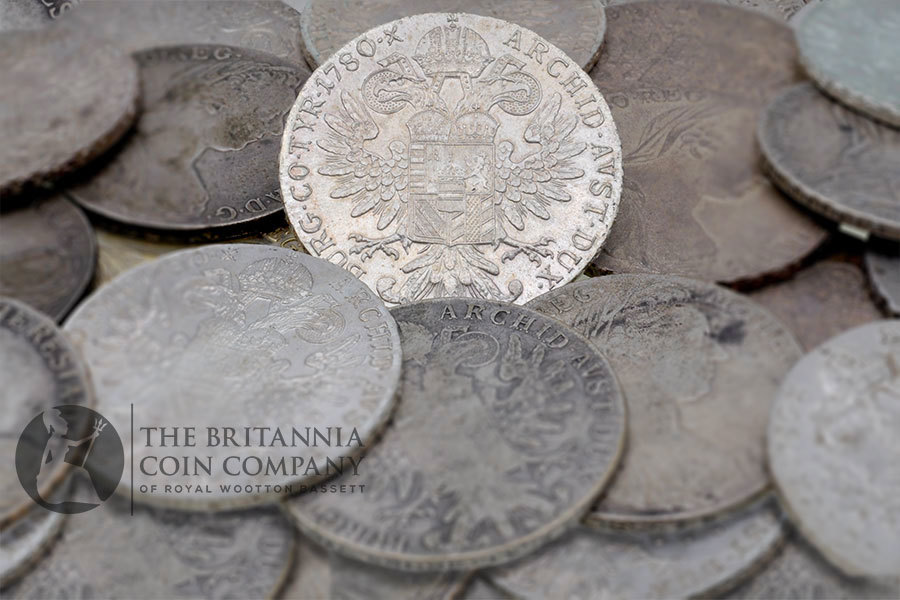
.jpg)


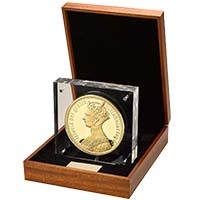
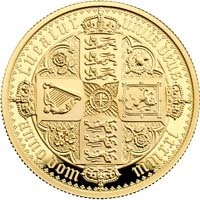


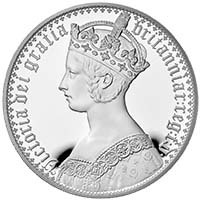
.jpg)
.jpg)
.jpg)

.jpg)
.jpg)

.jpg)
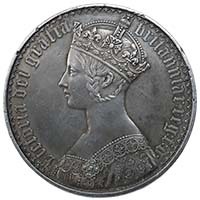
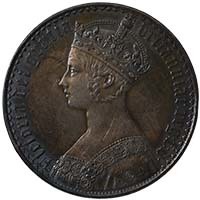
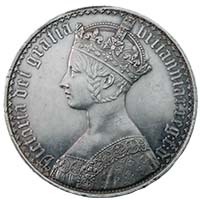
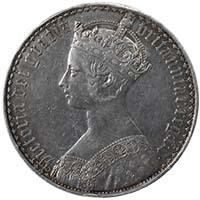
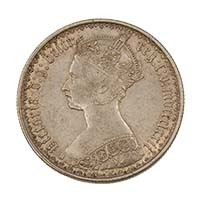
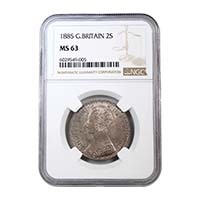
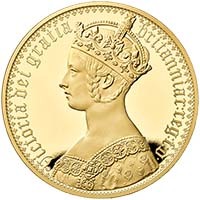

.jpg)
